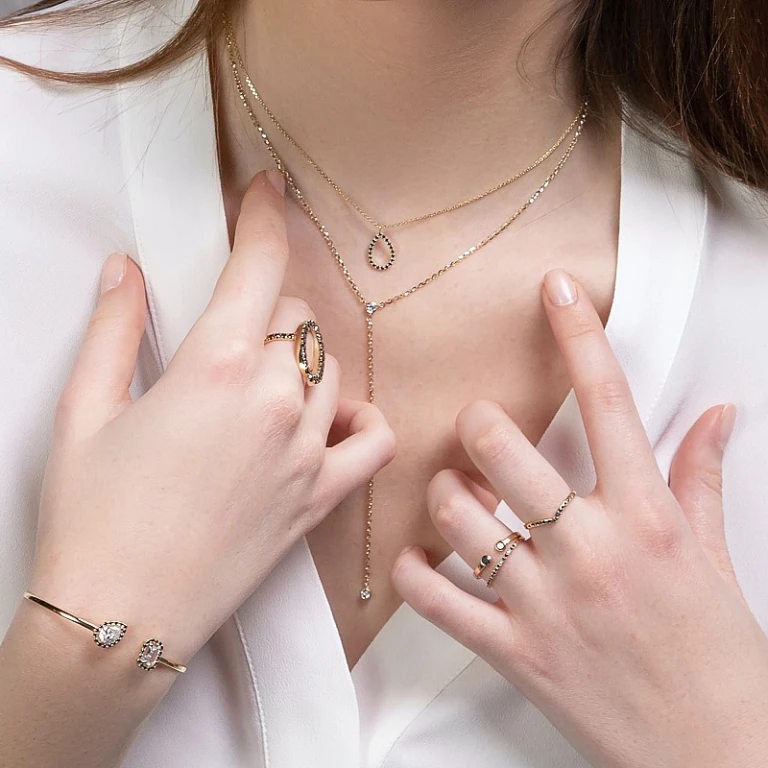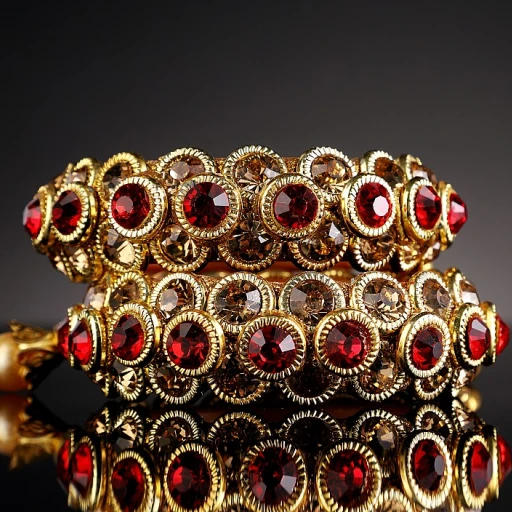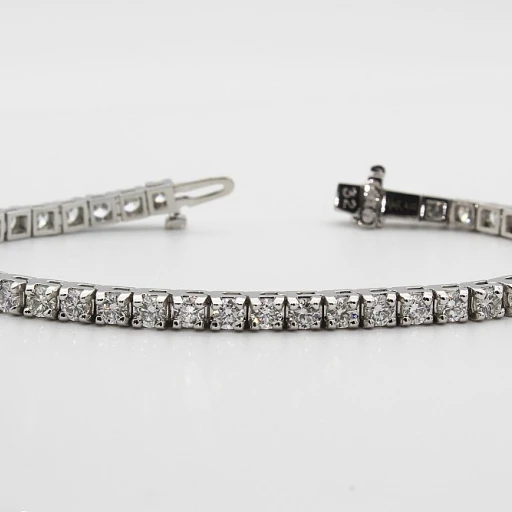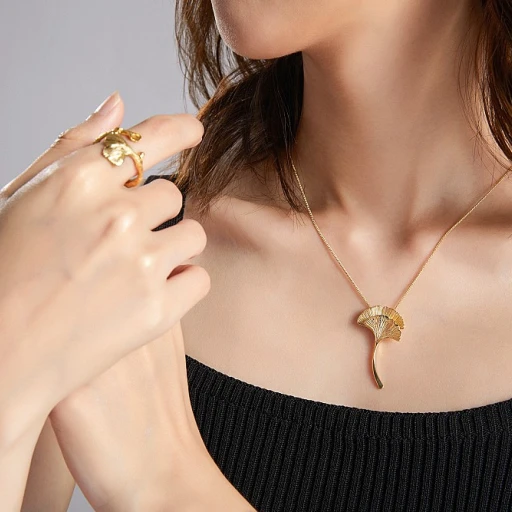Decoding Ruby Colors: An Investor's Palette
Unraveling the Spectrum of Ruby Red
For connoisseurs and investors in the fine jewelry marketplace, delving into the nuances of ruby colors is akin to an artist selecting the perfect shade from a palette. Color plays a monumental role in not only the beauty but also the value of these precious gemstones. According to the Gemological Institute of America (GIA), rubies are evaluated based on three parameters: hue, saturation, and tone, with hue being most critical. A majority of rubies on the market display hues ranging from orange-red to purplish-red, with pure, vibrant reds being the most sought after. The rarity of these reds naturally elevates their value, impacting investor decisions.
Mastering the Ruby Color Grading System
The value of a ruby is inextricably linked to its color, which makes a robust understanding of the ruby color grading system indispensable for investors. GIA's color grading system—an industry-standard reference—categorizes ruby hues using terms like "vivid red" or "strongly purplish red," providing a critical vocabulary for transactions. Investors are advised to reference these grades when making acquisitions, as they can drastically influence a ruby's market price. For example, research shows that even subtle differences in hue can lead to price differentials of hundreds, if not thousands, of dollars per carat.
Interpreting Color Clues for Investment Potential
Expert investors know that color can indicate more than just aesthetic appeal; it can also reveal the geographical origin of the ruby, affecting its rarity and value. It's been documented that rubies from Myanmar, traditionally known for their 'Pigeon's Blood' hue, command higher prices due to their historical significance and peerless color. Conversely, rubies from other regions may exhibit unique hues that appeal to niche collectors. Analyzing these subtleties and understanding market demand for certain hues allow investors to strategically expand their collections, ensuring a diverse investment portfolio and potentially higher returns.
Color Trends and Collector Interests: Synchronizing with the Current Market
Just as fashion sees shifting trends, color preferences in the fine jewelry market also evolve. A savvy investor keeps a finger on the pulse of current tastes. Industry reports indicate that while classic hues remain perennially popular, there is a growing attraction to unique and unconventional ruby colors that cater to individualistic tastes. These market shifts can offer new opportunities for investors to capitalize on emerging trends. By strategically acquiring pieces that align with both traditional values and contemporary shifts, investors can optimize their assets for longevity and desirability in a competitive market.
The Pigeon's Blood Benchmark: Myth or Market Standard?
Debunking the Pigeon's Blood Red Myth
Within the gemstone community, the term 'Pigeon's Blood' red has long been whispered in hushed tones, holding a near-mythical status among ruby investors. This illustrious descriptor is often bandied about as the top-tier color grade for rubies, evoking visions of sumptuous richness and fiery depth. But is it really the gold standard or just a marketing ploy designed to inflate prices? Recent statistics reveal that while rubies described as 'Pigeon's Blood' can fetch prices upward of 20% over their counterparts, savvy investors are advised to look beyond the romance of this term. The Gemological Institute of America (GIA) emphasizes the importance of a balanced assessment of hue, tone, and saturation, rather than relying solely on a name.
The Authenticity of Pigeon's Blood Certification
The lure of the Pigeon's Blood ruby is undeniable, and certificates claiming this prestigious nomenclature can send auction prices soaring. A study conducted by Gübelin Gem Lab, one of the preeminent authorities in gemstone certification, found that high-quality rubies bearing the Pigeon's Blood certificate can command a significant market premium. However, investors should remain circumspect, understanding that the criteria for this classification are subjective and can differ among labs. It's essential to trust reputed laboratories and to recognize that such certificates should be considered in conjunction with comprehensive gemstone evaluations.
Redefining Value: Beyond the Color Classification
When investing in fine rubies, it's crucial to dig deeper than color classification labels. Ruby value is multifaceted, and as our understanding of gemstone quality evolves, so too does the market. According to the latest data from Fine Color Gems, the focus on untreated stones, clarity, cut, and carat weight is increasingly shaping investment decisions. Fine jewelry collectors are now taking a more holistic account of a ruby's worth, recognizing that a stone with excellent clarity and cut may rival or even surpass a 'Pigeon's Blood' ruby in both beauty and long-term value.
Evolving Perceptions in the Jewelry Investment Landscape
As perceptions shift, and more information becomes available, the savvy investor's perspective on what constitutes a highly valuable ruby is expanding. The power of the 'Pigeon's Blood' label, while still significant, is increasingly balanced with empirical evaluations of a stone's overall appeal and rarity. Investment trends collated from auction results by Christie's and Sotheby's indicate a growing appreciation for the broader spectrum of ruby qualities. While the legendary hue will always be coveted, connoisseurs are recognizing the allure and potential of a wider range of tones, each with their own unique charm and investment potential.
From Mines to Market: Regional Ruby Hues and Their Histories
Tracing the Geographic Color Palette of Rubies
Every fine jewelry owner knows that rubies from different regions exhibit a kaleidoscope of reds, each with its own story, rarity, and value. In the world of luxury gemstone investment, geographical origin plays a pivotal role in the value and allure of a ruby. Statistics from the Gemological Institute of America (GIA) indicate that Burmese rubies continue to lead the market with their coveted, vibrant red hues often referred to as 'pigeon's blood.' A term that is far from myth and deeply embedded in the market's perception of premium rubies.
The Subtle Nuance of Mozambique's Reds
Mozambican rubies have surged in popularity, and fine jewelry connoisseurs have taken note of their rich, saturated colors. In 2011, a significant deposit was found in Mozambique, and according to a report by GIA, these gems can exhibit hues that closely resemble the famed Burmese rubies. The Montepuez region has since become synonymous with high-quality rubies, characterized by their deeply fluorescent reds mixed with purple hues, making astute buyers ponder their investment portfolios.
Delving into the Diversity of Asian Rubies
Vietnamese and Thai rubies offer a spectrum of reds that are a recognized part of the fine jewelry market. While Vietnamese stones can rival the clarity and hue of the Burmese classic, Thai rubies tend to have darker, more brownish undertones, often labelled 'Siamese color' in the trade. Collectors and investors remain attentive to these distinctions, often weighing the velvety reds of Vietnam against the robust, earthy tones of Thailand, all of which contribute distinctly to the global ruby market dynamics.
Madagascar's Ruby Renaissance: Vibrant and Varied
Madagascar is a region whose ruby gems are increasingly catching the eyes of buyers worldwide. With mining only beginning in earnest in the 1990s, data from the GIA showcases Madagascan rubies as being versatile, often presenting a striking pinkish-red to purplish-red hue. For jewelry enthusiasts and strategic investors alike, this island offers a rich tapestry of colors, providing a fresh and captivating alternative to the more traditional sources.
Assessing Color and Provenance: An Investor's Guide
In making informed decisions about ruby investments, one cannot overlook the importance of color and provenance. Each source carries its unique fingerprint—a combination of hue, tone, and saturation, underpinned by its own history and cultural allure. Discerning investors pair the qualitative analysis with hard data, understanding that the rarity and desirability of a ruby are often a result of its storied provenance. This differentiation is crucial in navigating the market successfully and finding the gemstones that promise the best potential for long-term appreciation.
Strategic Ruby Acquisitions: A Buyer's Color Compass
Tailoring Your Ruby Portfolio: A Color-Based Investment Guide
Investing in fine rubies is akin to navigating an opulent maze of color and rarity. The world of high-value gemstones is buoyed by a range of hues, each promising unique investment potential. For instance, recent statistics reveal that rubies with a strong, vivid red called 'pigeon's blood' can command prices upwards of $1 million per carat. However, the ruby spectrum is vast, and knowing which color to invest in can make all the difference.
Unlocking the Color Code for Maximum Returns
Selecting a ruby for investment is a nuanced process, with color being the paramount factor. Each ruby hue has its aficionados and market demand. According to leading gemstone experts, vibrant and evenly saturated rubies often yield the highest returns, demonstrating an upward trend in auction results year after year. For an investor, understanding the gradations from pinkish-red to deep crimson can become a game-changer in their portfolio.
- Vibrant Reds: High demand and exceptional market value
- Pinkish Hues: Growing popularity and potential sleeper hits
- Deep Crimson: Classic beauty with a consistently solid market performance
The Authenticity Factor: Certification and Provenance
While color reigns supreme, the authenticity of a ruby's color is equally crucial. An investment-grade ruby should always be accompanied by a certificate from a reputable gemological laboratory, confirming its natural color and lack of artificial treatment. In the world of fine jewelry, a report from the Gemological Institute of America (GIA) or similar institutions adds significant credibility and can enhance the resale value of a ruby by a staggering percentage, often justifying higher initial investment costs.
Beyond Red: Exploring the Unusual Shades
Emerging trends in the fine jewelry market have unveiled an interest in rubies that bear unique, non-traditional hues. Seasoned investors are diversifying their collections with these rarities, capitalizing on the market's burgeoning appetite for the unusual. As an example, a recent auction saw a rare purple-hued ruby fetching a record-setting bid, underscoring the lucrative potential of stepping outside the traditional color spectrum.


-large-teaser.webp)





-large-teaser.webp)